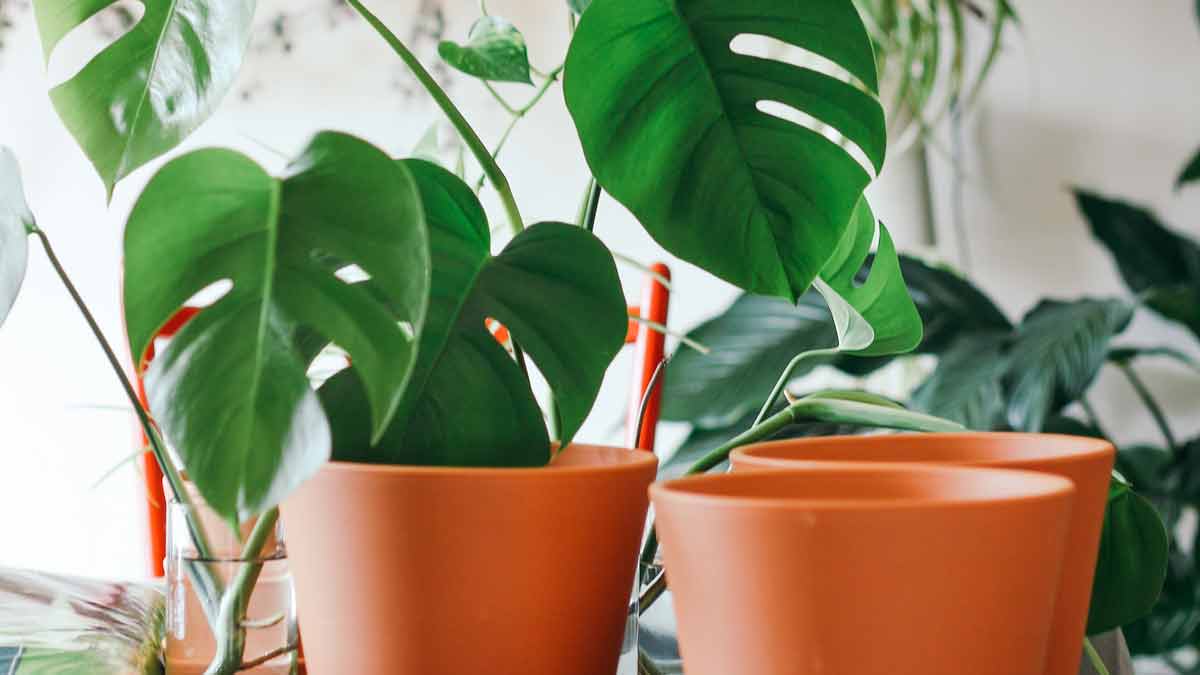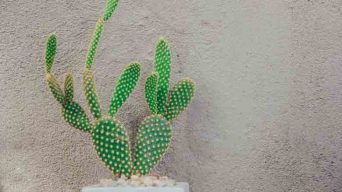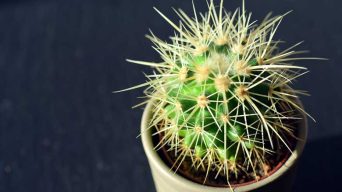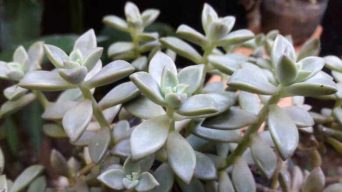A Monstera plant can be split by cutting the root ball into two or more plants with a sharp knife, making sure each new plant has enough roots and stems. Dividing is best done during repotting in late winter or early spring. To get split leaves, choose a cutting with at least 2 leaves having splits and plant it in well-draining soil in indirect light.
With their stunning fenestrated leaves and tropical allure, Monstera plants have become increasingly popular among houseplant enthusiasts.
However, as your Monstera grows larger and more unwieldy, you may need to split it into manageable sections.
Luckily, our step-by-step guide on how to split a Monstera plant will walk you through the process from start to finish, ensuring that both halves of your beloved plant thrive after parting ways.
So whether you’re a novice or a seasoned green thumb enthusiast, grab your pruning shears and let’s begin!
Understanding Monstera Plants
Monstera plants, also known as Swiss cheese plants, are popular houseplants with fenestrated leaves with holes or splits.
What Are Monstera Plants and Why Should You Split Them?
Monstera plants, also known as Swiss Cheese Plants or Split Leaf Philodendrons, originate from Central America.
They are a popular houseplant due to their unique fenestrated leaves.
These evergreen tropical vines boast large, glossy green leaves that develop distinctive holes and splits as the plant matures.
The size of these natural openings can vary based on factors such as plant type and growing conditions.
Splitting a Monstera plant is essential for several reasons, including promoting overall health and encouraging new growth.
You can propagate more plants or control its size in your living space by splitting your Monstera at the nodes – the part where all new growth originates.
In addition to offering aesthetic benefits by maintaining a well-groomed appearance, dividing Monstera plants helps prevent root congestion that could lead to poor soil drainage and, eventually, root rot.
Following a step-by-step guide for splitting your beloved Swiss Cheese Plant ensures it thrives while providing the opportunity to expand your indoor jungle with new offspring!
Benefits Of Splitting
Splitting a Monstera plant offers numerous benefits, contributing to healthy growth and improved aesthetics.
One primary advantage is the prevention of overcrowding.
As Monstera plants mature, their aerial roots and stems can become congested in a small space, putting undue stress on the plant and potentially causing root rot.
By dividing your Monstera into smaller sections with adequate room for root growth, you’re keeping its roots healthy and encouraging more vigorous development overall.
Another benefit of splitting your Monstera is that it promotes better light distribution among the leaves.
In the wild, Monsteras develop fenestrated leaves with splits and holes to maximize access to indirect sunlight under dense tropical canopies.
This physiological trait becomes more apparent when sufficient space is provided between individual plants – even indoors!
When properly spaced out after splitting, each section has an equal opportunity to receive bright indirect light required for optimal photosynthesis while avoiding too much direct sunlight that could lead to scorching or discoloration of those beautifully unique leaves.
Finally, dividing your Swiss cheese plant allows you to propagate new offspring effortlessly.
As long as each divided portion includes at least one node (aerial root), repotting them into appropriate soil will yield successful propagation – further extending the satisfaction of nurturing thriving indoor jungle ecosystems.
Best Time To Split A Monstera Plant
The best time to split a Monstera plant is during the spring or early summer months when the plant is actively growing. This is also a great time to repot your Monstera as well.
Splitting your plant during this time allows for faster recovery and root growth, giving it plenty of time to settle in before the winter months arrive.
It’s important not to split your Monstera too frequently, as it can cause stress on the plant and slow down its growth.
Waiting until you see aerial roots starting to grow from the stem indicates that it’s ready for splitting.
This typically occurs every two years, depending on how fast your Monstera plant grows.
How To Split Monstera Plants: A Step-by-Step Guide
To split a Monstera plant, prepare the plant and pot, dividing roots and stems carefully, then repot the divided plants in fresh soil.
1. Preparing Your Plant And Pot
Before splitting your Monstera plant, it is important to ensure the plant and pot are appropriately prepared.
Here are some tips to help you get started:
- Choose a healthy plant: Select a plant that has been growing well and is free from diseases or pests.
- Gather all necessary materials: Get a clean pair of pruning shears or scissors, a fast-draining potting mix, a clean pot with drainage holes, and sphagnum moss if needed.
- Water the plant: Give your Monstera plant a good watering a few days before you split it. This will ensure that it is well-hydrated before the process.
- Remove the plant from its pot: Carefully remove the Monstera plant from its container and gently shake off any excess soil.
- Trim away dead roots: Look for brown or dead roots on the root ball and trim them off with sharp, clean scissors or pruning shears.
By following these steps, you can ensure that your Monstera plant will be properly prepared for splitting and have every chance of thriving in its new environment.
2. Dividing Roots And Stems
To divide a Monstera plant’s roots and stems, follow these steps:
- Gently remove the plant from its pot and brush away excess soil to reveal the root ball.
- Identify any natural separations in the root ball, such as distinct sections of roots or stems emerging from a central point.
- Use sharp, clean pruning shears to cut through any connected roots carefully or stems, separating the plant into two sections.
- Be sure to cut cleanly and precisely to avoid damaging either section of the plant.
- Once separated, place each section into its own pot with fresh potting mix and water thoroughly.
Dividing the roots and stems can be tricky, but creating multiple healthy plants from one parent Monstera is a great way.
Just observe proper aftercare techniques like watering and light exposure to ensure that each new plant thrives independently.
3. Repotting The Divided Plants
After dividing your Monstera plant, it’s essential to repot each section into its pot.
Use a well-draining soil mix and make sure the container has drainage holes to prevent root rot.
Gently separate the roots with your fingers and place the divided plants in their new homes, making sure not to bury them too deeply.
Water thoroughly after transplanting and avoid fertilizing for several weeks to allow the plants to acclimate.
It’s also essential not to expose newly transplanted Monstera plants to direct sunlight, which can result in leaf burn. Instead, provide bright indirect light until they’ve settled in.
Remember that regular maintenance is crucial for healthy growth once you’ve successfully split your Monstera plant.
Monitor soil moisture levels and humidity, prune when necessary, and look for signs of infestation by pests like fungus gnats or spider mites.
With proper care, your newly divided Monstera plants will flourish into beautiful additions to your indoor jungle!
Aftercare For Split Monstera Plants
After splitting a Monstera plant, proper aftercare is crucial for healthy growth.
This includes watering and fertilizing techniques, providing adequate light and temperature, pruning, and maintenance.
Learn more about these necessary steps to ensure your Monstera plants thrive.
1. Watering And Fertilizing Techniques
Proper watering and fertilizing are crucial for split Monstera plants to thrive.
Here are some tips on how to do it:
Watering
Monstera plants’ watering frequency depends on the light level they receive and the soil moisture level, with more frequent watering in brighter light and less regular watering in lower light.
Split Monstera plants should be watered thoroughly until the soil is moist but not soggy. Excess water should be allowed to drain out.
Fertilizing
Split Monstera plants require regular fertilizing with a complete fertilizer formulated for indoor plants, containing nitrogen, phosphorus, potassium, and other essential nutrients.
The most popular fertilizing method for Monstera plants is using a liquid 20-20-20 fertilizer.
Split Monstera plants should be fertilized every six months.
Proper watering and fertilizing practices will help ensure your split Monstera plant stays healthy and produces beautiful leaves.
2. Providing Adequate Light And Temperature
Monstera plants thrive in bright, indirect sunlight.
Placing them near an east- or west-facing window or filtered light can help maintain their attractive leaves with pronounced “cheese” holes.
However, direct sunlight can damage the foliage and cause it to scorch.
It’s also important to provide consistent temperatures for your Monstera Deliciosa plant between 65°F and 85°F.
Lower temperatures may slow growth, while higher temperatures above 90°F can harm the plant.
In addition to providing adequate light and temperature, you should keep indoor environments humid to mimic their natural habitat in the rainforest.
This is especially crucial during winter when indoor heating systems significantly dry out the air inside homes.
Increasing humidity levels indoors using a fine mist mister or humidifier can help retain moisture around your Monstera aerial roots and ensure healthy new leaf growth.
A balance between light exposure and warm temperature ranges with sufficient humidity levels will allow you to enjoy beautiful split-leaf Monstera greens as they grow into strong tropical houseplants that beautify any space they’re placed in!
3. Pruning And Maintenance Tips
To keep your split monstera plants healthy and thriving, here are some important pruning and maintenance tips to follow:
- Trim back foliage: To control growth and maintain the desired shape of your plant, trim back any unruly or overgrown foliage about two inches below the node. This will encourage new growth and prevent your plant from becoming too bushy.
- Cut aerial roots: Monstera plants often produce aerial roots that can become unsightly or take up too much space. Make a clean cut below the stem using sharp pruning shears to remove them.
- Regular watering: Monstera plants should be watered every 1-2 weeks, allowing the soil to dry out slightly between waterings. Overwatering can lead to root rot, so don’t let your plant sit in standing water.
- Adequate lighting: These tropical plants thrive in bright indirect light, so be sure to place them near a window with plenty of sunlight. Avoid exposing them directly to harsh sunlight, as this may cause damage to the leaves.
- Prune for new growth: If you want your monstera plant to produce more leaves and become fuller, prune back stems with fewer or smaller leaves than others on the same vine.
Following these simple maintenance tips ensures that your split monstera plants remain healthy and beautiful for years!
Other Propagation Methods For Monstera Plants
In addition to splitting Monstera plants, there are other easy propagation methods, such as rooting stem cuttings in water or soil.
Read on to discover more about these techniques and how they can help you expand your Monstera collection.
Propagating In Water
If you’re looking for an easy way to propagate your Monstera plant, propagating in water is a great option.
Here’s how to do it:
- Select a healthy stem cutting from your Monstera plant with at least one node (the point where leaves grow from the stem).
- Fill a clear jar or vase with water and place the stem cutting in it, making sure the node is submerged.
- Place the jar or vase in bright, indirect light and change the water every few days to keep it fresh.
- After several weeks, you should start seeing new roots growing from the node.
- Once the new roots are a few inches long, you can transplant your new Monstera plant into the soil.
It’s crucial to highlight that although initiating the propagation of Monstera plants in water can yield positive results, certain experts suggest promptly transitioning the plant into the soil to prevent hindering root development.
Propagating In Soil
Propagating Monstera plants in soil is a popular method and can be done by following these simple steps:
- Take a healthy cutting from the mother plant, ensuring it has at least one node and two leaves.
- Prepare a well-draining potting mix by combining peat moss and perlite or sand.
- Plant the cutting directly into the potting mix, burying the node approximately 1-2 inches deep.
- Water the cutting thoroughly, keeping the soil consistently moist but not waterlogged.
- Place the pot in bright indirect light, avoiding direct sunlight, which can scorch the delicate leaves.
- Over time, new roots should emerge from the buried node, and new growth should appear above ground.
It’s important to note that propagating Monstera cuttings in soil can take up to 2-3 months before new growth starts to appear, so patience is key!
Also, watch out for signs of root rot, which can occur if the soil is too wet or poorly draining.
Following these steps, you can successfully propagate your Monstera plants in soil and watch them thrive as they grow into mature plants with their iconic fenestrated leaves.
Final Thoughts
Splitting a Monstera plant may seem intimidating initially. Still, it can be a simple and rewarding process with the right tools and knowledge.
Following our step-by-step guide and proper aftercare techniques, you can enjoy healthy and thriving Monstera plants in your home.
Whether you choose to split your Monstera for aesthetic purposes or propagation reasons, give them enough love and attention they need to flourish.
These tropical plants are worth the effort with their stunning fenestrated leaves and unique growth patterns!







